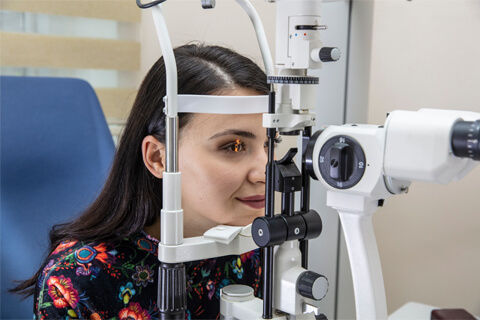Keratoconus is a progressive eye condition in which the cornea thins and bulges outward, leading to distorted vision. Corneal Collagen Cross-Linking with Riboflavin (C3R) is one of the most effective treatments to slow down or halt the progression of keratoconus. In India, where cases of keratoconus are rising due to genetic and environmental factors, C3R has become an accessible and widely recommended treatment.
Understanding C3R Treatment
C3R, also known as corneal cross-linking (CXL), is a minimally invasive procedure aimed at strengthening the corneal tissue. This is achieved by applying riboflavin (Vitamin B2) drops to the eye and exposing it to ultraviolet (UV-A) light. This combination triggers biochemical reactions that reinforce the collagen fibers in the cornea, preventing further deterioration.
Procedure: Step by Step
Preoperative Assessment: An ophthalmologist conducts corneal topography and pachymetry to determine the severity of keratoconus.
Application of Riboflavin Drops: The patient’s eye is numbed with anesthetic drops, and riboflavin is instilled over 20–30 minutes to allow absorption.
UV-A Light Exposure: A specialized UV light is used for 10–30 minutes, activating the riboflavin and inducing collagen cross-linking.
Post-Treatment Care: The eye is covered with a bandage contact lens, and antibiotic drops are prescribed to prevent infections.
Recovery and Aftercare
Patients may experience mild discomfort, sensitivity to light, and temporary blurriness for a few days.
Full recovery takes 1 to 3 months, during which the cornea stabilizes.
Follow-up visits are crucial to monitor corneal healing and visual improvement.
Avoid rubbing the eyes and exposure to dust or pollutants.
Effectiveness of C3R in India
C3R is highly effective in stabilizing keratoconus, especially when diagnosed early. Indian studies suggest an 85-90% success rate in halting progression. The cost of C3R treatment in India ranges from ₹25,000 to ₹50,000 per eye, depending on the hospital and technology used. Government initiatives and private hospitals have improved accessibility, making it a viable option for many patients.
Alternative and Advanced Treatments
While C3R halts progression, it does not correct vision loss. Patients may need spectacles or specialized contact lenses post-procedure. For advanced cases, additional treatments like Topography-Guided PRK (TG-PRK) or Implantable Collamer Lenses (ICL) may be considered. In severe cases, corneal transplantation remains the last resort.
C3R is a game-changer for keratoconus management in India. Early diagnosis and timely intervention can prevent severe vision impairment, making regular eye check-ups essential. With growing awareness and advancements in ophthalmology, C3R continues to offer hope to thousands of patients across the country.


